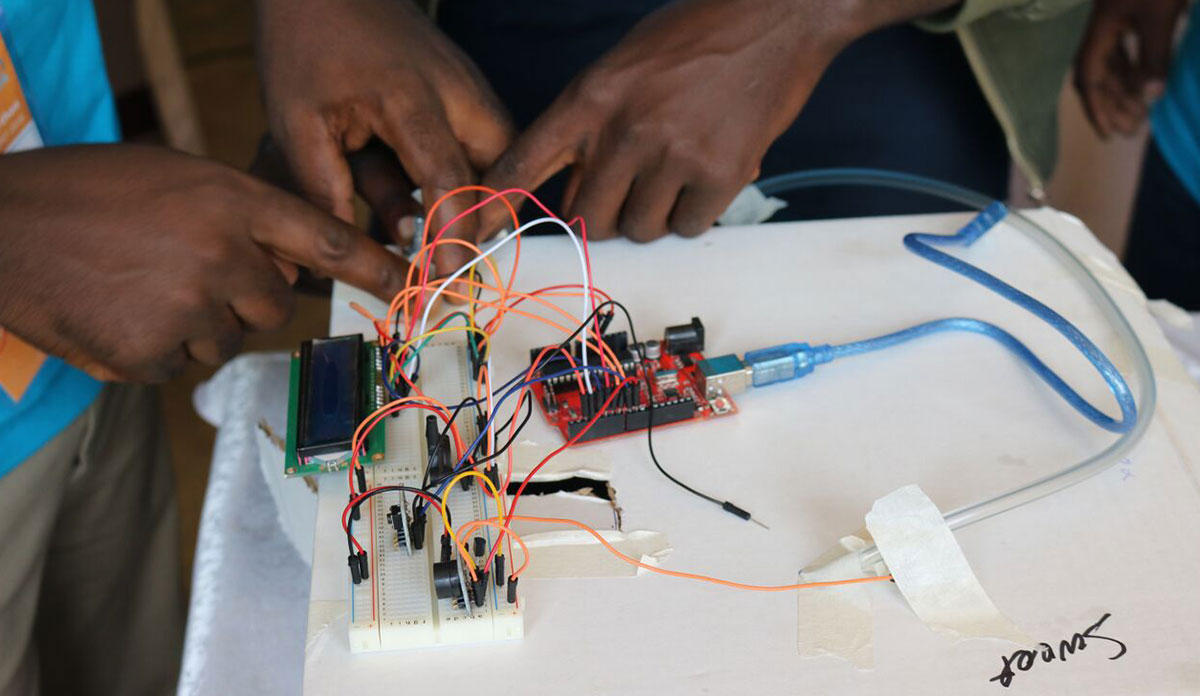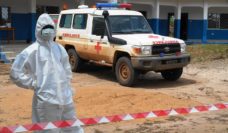Ischemic heart failure is the most prevalent cause of death in India. In Uganda, it’s HIV/AIDS. Public sector efforts at the community, national, and international levels have long sought to address disease burden in low- and middle-income countries (LMICs) like Uganda and India. Smart, forward-thinking private sector companies have contributed similarly by pooling resources for research and development as well as advocacy.
The Consortium for Affordable Medical Technologies (CAMTech) supports public-private partnerships and fosters shared value to accelerate medical technology innovation and build entrepreneurial capacity. Housed at the Massachusetts General Hospital Center for Global Health, CAMTech sources and accelerates health technologies to commercialization and patient impact through partners on the ground in Uganda and India. It has a global reach through the CAMTech Innovation Platform. Providing an ecosystem for innovative medical technologies, our hack-a-thons and accelerator program spur innovations tackling pressing clinical challenges in global health.
Hack-a-thons, often sponsored by partners in the private sector, convene innovators from multi-disciplinary fields like public health, medicine, engineering, and government to design solutions to clinical challenges among newly-formed teams in 48 hours or less.
Hack-a-thons, often sponsored by partners in the private sector, convene innovators from multi-disciplinary fields like public health, medicine, engineering, and government to design solutions to clinical challenges among newly-formed teams in 48 hours or less. Hack-a-thons addressing neonatal and maternal health, healthcare access for the urban poor, global surgery, Zika, global cancer, opioid addiction, diabetes, and Ebola fill a gap in the medtech space between ideation and commercialization. However, measuring the impact of innovation efforts is vital to strengthening the medtech space. Our survey assessment of outcomes from healthcare-focused hack-a-thons over the course of our first four years and across three countries was published in BMJ Innovations in January 2017. Using emailed surveys, CAMTech collected data on 196 projects from 283 individuals participating in 12 hack-a-thons in India, Uganda, and the United States between 2012 and 2015. The results are in: hack-a-thons, followed by acceleration support and capacity building, do work. The data are convincing.
Building an Ecosystem While Investing in Innovations
The average size of a team was 4.8 people, and 60% of teams had three or more professional disciplines represented. These professional disciplines frequently include engineers, clinicians, entrepreneurs, designers, and public health innovators. Among teams participating in CAMTech hack-a-thons, 45 reported at least one member had obtained a job or position because of networking at a hack-a-thon, and 108 teams (30% of the total 356 teams) reported at least one member working on additional technologies with people they had met at a hack-a-thon.

However, we noted a gender gap: 77% of respondents identified as male, and 23% of respondents identified as female. CAMTech is responding to gender inequality in the medtech ecosystem by engaging women in LMICs, supporting women’s leadership, highlighting innovations by women in global health and profiling successful female entrepreneurs. Launching a social media listening campaign to better understand barriers will also inform strategies to improve gender equity in the medtech ecosystem.
Additionally, CAMTech hack-a-thons extend opportunities to innovators in LMICs. The medtech space predominately caters to innovators in high-income countries. Their technologies are not often generalizable to LMICs because 40-70% of innovations fail upon implementation in LMICs. By including partners at CAMTech Uganda and CAMTech India, innovators develop sustainable, local solutions for local clinical challenges.
A Source of Financing for Medtech Innovators Passionate about Global Health
Hack-a-thons not only strengthen networks while investing in innovations – they also offer a mechanism to obtain seed financing and access to investors and funders for innovators. Three years after a hack-a-thon, one team raised $62.5 million for their innovation and formed a new company with over 200 team members, pharmacies, and offices.

CAMTech found that the ratio of costs of holding these events to the investment it yields is nearly 2:1. And when the very successful outlier is included in the calculation, the ratio rises to 88:1. While this is not a traditional return on investment, as the funds are not returning to CAMTech, we view this as an ability to amplify investment – for every dollar we put into a hack-a-thon, it will yield at least two times for teams on average after the event. We see this as an important contribution to building the global medtech ecosystem.
Ideate, Innovate, Co-Create
Hack-a-thon challenges were diverse and included non-communicable chronic diseases, newborn child health, maternal health, infectious disease, reproductive health, disability, and road safety, among others. The innovations were diverse, too. Innovators responded to these clinical challenges by designing preventive, therapeutic, and diagnostic medical technologies. After hack-a-thons, 30% of teams continued their work, and 10% of teams planned to engage in future work.

At a mean follow up of just over 12 months, eighty-eight projects had begun piloting in preclinical settings, on providers or healthcare workers, or on patients. Among teams participating in 12 hack-a-thons, innovators filed 22 patents and formed 15 new companies.
We already see that hack-a-thons help build the medtech ecosystem when we systematically measure the impact. However, supporting innovators in LMICs does not stop with CAMTech hack-a-thons. It requires the participation of journalists, policymakers, academics, and the private sector in the innovation process to ameliorate health outcomes in vulnerable populations. Journalists must share innovators’ stories, policymakers must design an environment favorable to medtech, and researchers must continue to monitor and evaluate impact as the global health community fosters disruptive innovation.
Feature image: CAMTech Uganda Medtech Hack-a-thon, 2016. Photo and infographics courtesy of CAMTech.














